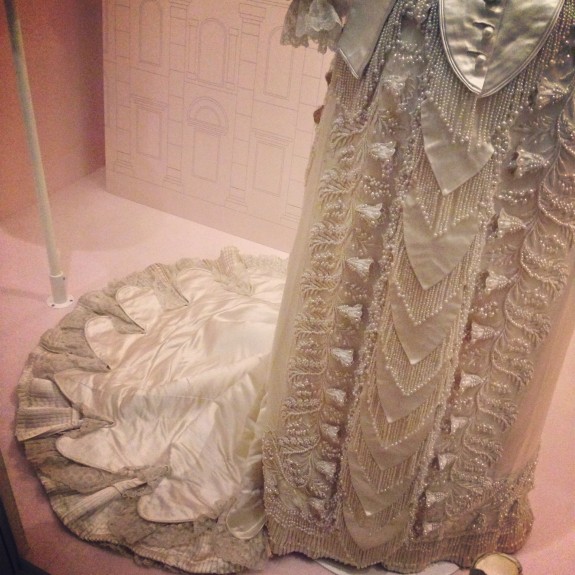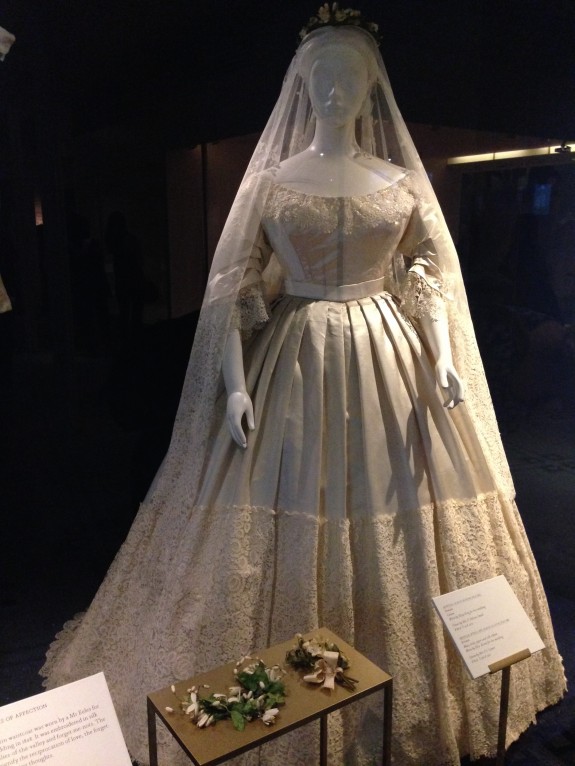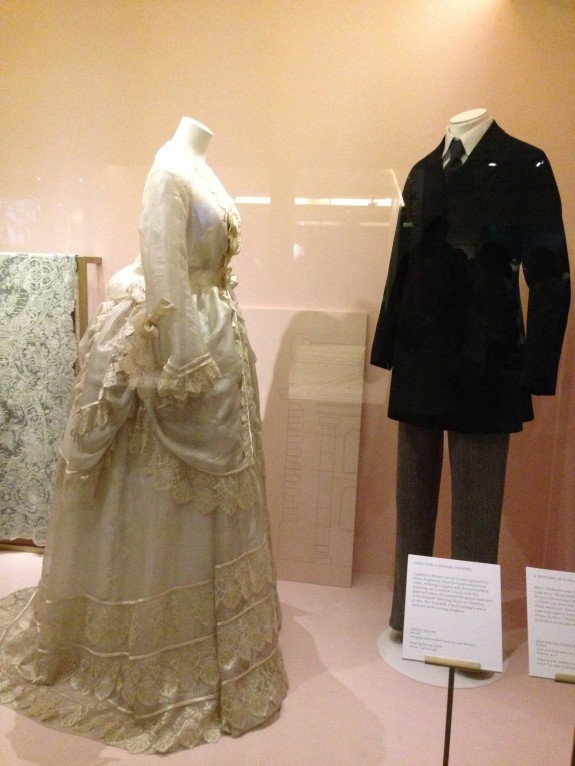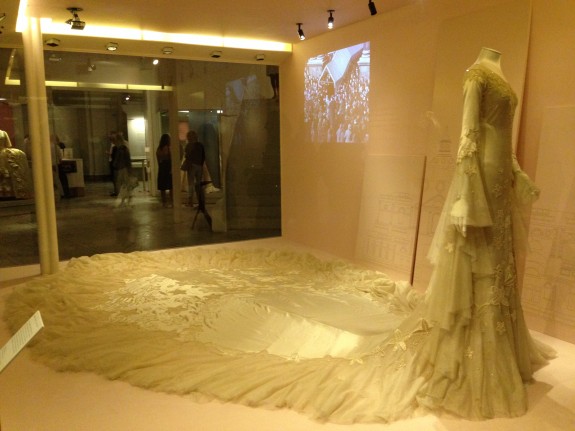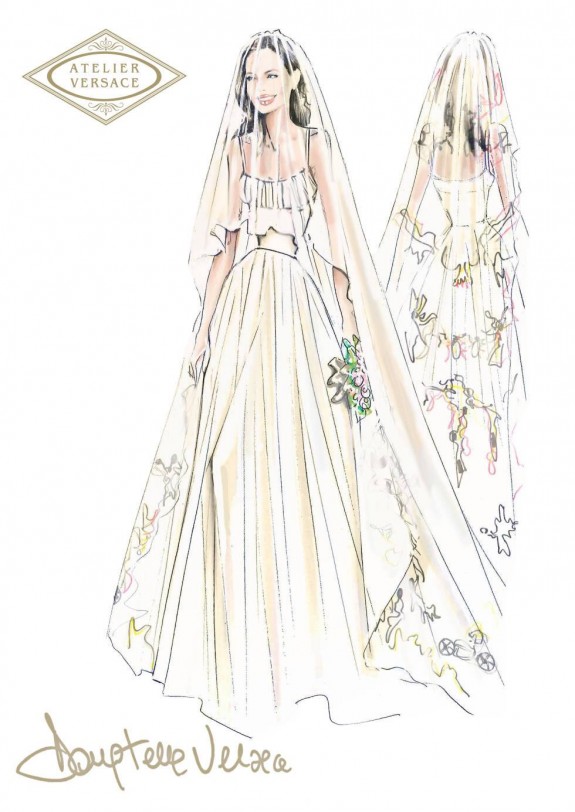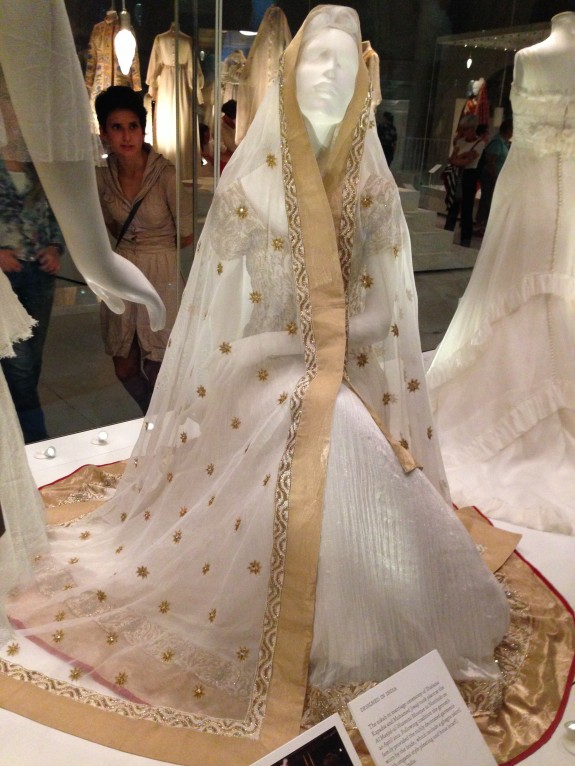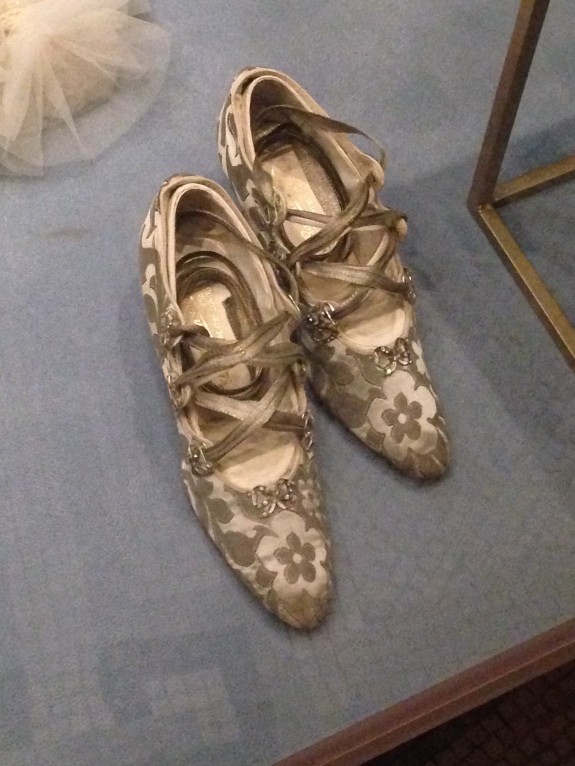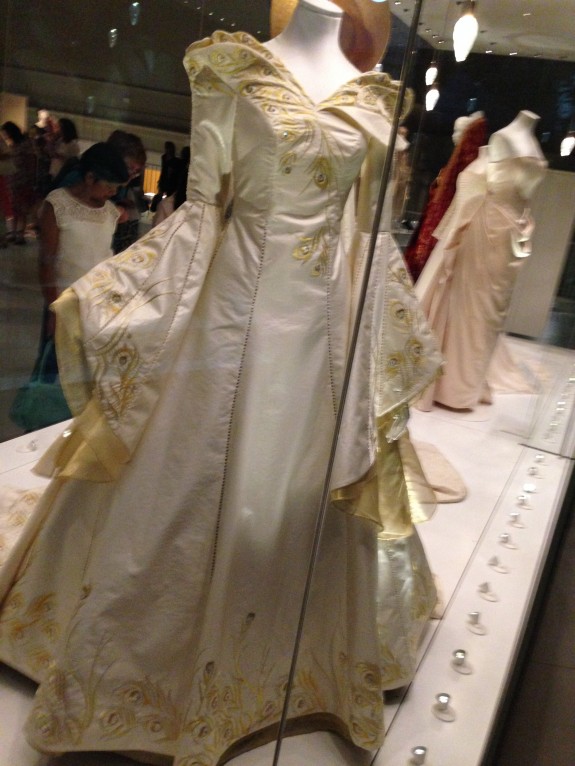Last month, I visited London’s beloved Victoria and Albert Museum, which houses a lovely collection of traditional and contemporary art, fashion, and cultural pieces. They’re currently hosting a wedding dress exhibit, called Wedding Dresses 1775-2014, which explores the artistic inspirations and styles of the traditional white wedding dress through the ages. If you happen to be in London from now until March 2015, I highly recommend you check out the museum.
The exhibit traced the globalization of the white dress – from how it originated from a simple, cotton dress that lower income brides wore to signify their innocence before marriage to a dress embellished with silk, florals, and beads to represent high society. Queen Victoria of England famously popularized the white wedding dress culture when she wore one to marry Albert in 1840.
Back in the 1800s, wedding dresses were made for repeat wear. Lace was expensive, so other symbols of delicacy were used to garnish the dress – including orange blossoms, which represent love and fertility. Poorer women used such practical materials so that they could re-wear their dresses at other weddings and social events.
The use of silk, lace, and pearls grew in the 1900s, as England’s middle class came into more wealth and wanted to show it off. Brides would hire specialized dressmakers to create custom gowns. Well-to-do bridegrooms also made use of symbolic traditions in wedding wear, opting to wear silver as a sign of purity at their ceremonies.
Wedding dresses soon evolved to fit the environment, as well as the times. In colder parts of Europe, brides would wear velvet for winter weddings.
The tradition of passing along “something old” and “something borrowed” originated from the veil, which was passed between brides of different generations for repeat wear. This system was developed primarily because lace, often used in wedding veils, was too expensive even for a middle class family to afford multiples.
From the 1970s to the 1990s, traditional Victorian wear from the late 1800s came back into fashion. Flowing skirts, silken materials, and lace were popular adornments for wedding dresses. However, this era also came with a bout of experimentation – as brides opted to glam up their dresses with colors, beads, feathers, and other personal effects.
Gwen Stefani’s ombre pink wedding gown from her 2002 wedding to Gavin Rossdale is featured at the V&A museum, along with some other pieces of character.

{via glamour.com}
The upper deck of the V&A exhibit contains wedding dresses from all over the world – from Chinese silken dresses to Gujarati panetars.
As more prominent runway designers recognized the wealth in the wedding industry, they dominated dress design as well. Christian Dior, Vera Wang, and Versace are common high-end designers that celebrities hire to create their wedding gowns.
{via Angelina Jolie and Brad Pitt’s wedding}
And let’s not forget the now iconic Alexander McQueen that Duchess Kate Middleton walked to the cathedral in during her Royal Wedding to Price William! It’s not on display at this exhibit, but there is a 5 minute video that plays clips from British royal weddings through the ages.

{via frenzyofnoise.net}
The white wedding dress has evolved from a symbol of simplicity to elegance and grace. No matter which design and decor a bride chooses for her once-in-a-lifetime moment, the dress is bound to represent her family, culture, and social taste. This exhibit was a great way to literally walk through decades of wedding fashion and absorb exciting knowledge about the powerful industry. I thought it would make a lovely afternoon spent with some girlfriends to “ooh” and “aah” over the historical fashion.

